Telling A Story With Your Pictures
Telling A Story With Your Pictures
Taking Your Audience Along
by Jim Zuckerman
There are many reasons why people travel. Some like the spirit of adventure and discovery, and others enjoy intermingling with people from other cultures and seeing the world from a different point of view. There are people who travel to sell their pictures or to win contests in camera clubs, and many people get satisfaction out of telling a story with the photos they take on a vacation. Sharing experiences and images with friends and family is a large part of the pleasure they get from their photography.
There are many ways to tell a story, and the suggestions I offer here are just one photographer’s way of seeing things. Other photographers, both professional and amateur, will have different points of view as to what comprises a successful picture story. Having said that, it seems to me that if you want to tell the story of your trip, you need to approach the project so your audience really gets a sense of being there with you. You definitely want to get away from pictures of you standing in front of a famous place and smiling at the camera. The people with whom you are sharing your trip will get bored after a couple of pictures, and at that point they may politely look at the rest of the shots but it will be a painful experience for them to do so.
Here is how I break down the component pictures of a travelogue that will tell an all-encompassing story. This won’t apply to every type of trip, but it is a good outline to follow for most of the trips you take:
1. An establishing photo. This is a picture that gives the viewer a sense of a place. It could be a city skyline like the picture of Brisbane, Australia (#1), an aerial vantage point from a small plane such as the one I shot looking down on the island of Moorea in the Tahitian Islands (#2), or the stunning view of Lauterbrunnen, Switzerland from a hiking trail (#3). This is the kind of picture I would open the presentation with because it sets the stage for what will follow. I always like opening a travelogue or a lecture with a picture that knocks people’s socks off. I want to immediately grab their attention, and a strong establishing picture will do that.
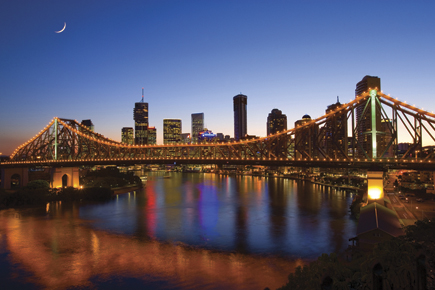 |
|
|
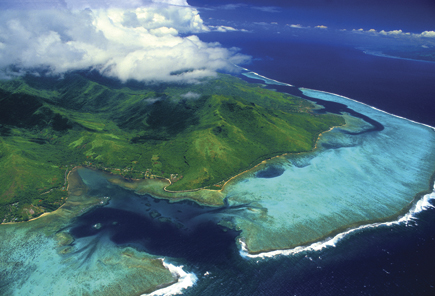 |
|
|
The pictures that follow don’t have to be in a particular order other than what helps you tell a story. I would include the following type of pictures.
 |
|
|
2. People doing things. Most travel includes interacting with people, even if you are climbing Mt. Everest or going overland across the Sahara Desert for the 52 day camel trip from Morocco to Timbuktu. Your travelogue will be much more interesting to audiences if you show pictures of the cultures, the villages, the towns, and the people you encounter. Many photographers are uncomfortable with shooting people (unless they sneak pictures from behind so the subject doesn’t know they’re being photographed), but I suggest that if this is how you feel, try pushing yourself out of your comfort zone and focus your attention on photographing people. It will be very rewarding, and your travel presentations will be much more engaging. In addition, you will have some wonderful encounters with local people.
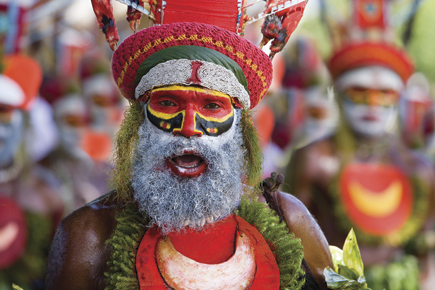 |
|
|
 |
|
|
Capturing people you see on your trips doing things can take many forms: celebrating in a festival in Papua New Guinea (#4); making handicrafts in a village in India (#5); walking on dunes in Morocco (#6); praying at the Wailing Wall in Jerusalem (#7); marching in a parade in Belgium (#8); and carrying chunks of sulfur down a volcanic mountain in Indonesia (#9). These kinds of images add a lot of interest to any travelogue, and even though you are showing still pictures, there is a sense of action to the presentation when you include people engaged in various activities.
 |
|
|
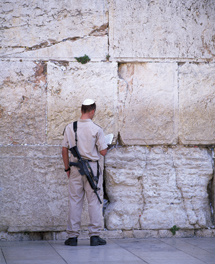 |
|
|
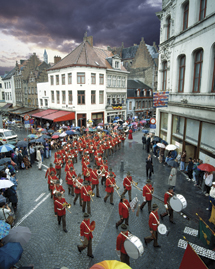 |
 |
||
|
|
3. Details. Include things in your story that most non-photographers never notice. The audience will appreciate the fact that you saw them, and it will be an education for them. Many people will realize that there is more to see and appreciate than immediately meets the eye. For example, take a look at a beautifully graphic mailbox in Vernazza, Italy (#10) or a unique door knocker (#11) in San Miguel de Allende, Mexico. Including these types of images underscores how rich your experience was in traveling to these places. Even simple subjects like a table and chairs, also in Mexico (#12), can turn into art when photographed well.
 |
|
|
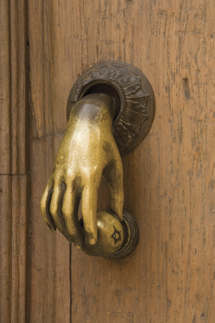 |
|
|
 |
|
|
4. You in action. Include 2-4 pictures of you involved in your experience. Sometimes I will ask someone in one of my photo tours to take a picture of me as I’m shooting. In Papua New Guinea you can see me directing one of my subjects to turn a certain way (#13). This gives your audience a sense of what you went through to get the pictures they see in your travelogue, and it’s an important part of your story. These types of pictures don’t have to be works of art, of course. If they aren’t winning compositions or if the backgrounds are busy, that’s not the point. They are included simply to tell part of your story, such as the shot of me photographing a penguin in South Africa (#14), and my interaction with a group of Himba girls in Namibia (#15). I’m showing them their picture on the LCD monitor on the back of my camera.
 |
|
|
 |
|
|
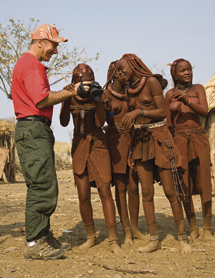 |
|
|
5. Sunrise and sunset lighting. Make sure you include pictures with beautiful lighting. This will set your story apart from others. Instead of simply showing what you did and where you went, people will feel like they are looking at fine art imagery if you pay attention to the lighting. This is most appropriate for landscape work, like the sunset light I captured in Alaska in Denali National Park (#16). Low angled sunlight is also great for so many other subjects like architecture (#17), seascapes (#18), outdoor portraits (#19), and images involving digital composites (#20).
 |
|
|
 |
|
|
 |
|
|
 |
|
|
 |
|
|
6. Portraits. Don’t forget to move in close to your subjects and take intimate portraits of them. They can be candid shots or posed photos where the subjects are looking into your lens. Your audience will appreciate these penetrating portraits, and they will add a rich dimension to your story. When I find faces that have character, beauty, or depth, I use a medium telephoto to fill the frame with them. I did this with a Javanese bride in Indonesia (#21) and with an Ifugao tribesman in the Philippines (#22). I pulled back a little when I photographed a Peruvian girl with her llama (#23) so I could show enough of the rich detail in the girl’s clothing as well as the endearing relationship between the two subjects.
 |
|
|
 |
|
|
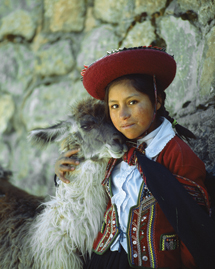 |
|
|
You will undoubtedly include many other types of images in your presentation of a trip. This could include activities aboard a cruise ship, a campfire outing, hot air ballooning, and more. It just depends on what you saw and what you did on your vacation. You will also want a strong ending image, one that is visually powerful or perhaps humorous. Always leave your audience wanting more—that’s a sure-fire way to make them appreciate what you’ve just shown even more.
Social Networking
Many photographers now like to share their travel pictures in a social network website like Facebook (www.facebook.com). You can upload pictures on a day-by-day basis, and your friends and family can visually follow your itinerary and read any commentary you’d like to write. This is also a way of expanding your base of friends, because other photographers outside your circle of friends will want to enjoy your pictures also. This is especially true if they are thinking of traveling to the same place, because they can plan their trip partially based on the exciting images of the places you visited. You can also set up a blog on your website, and as you travel you can post pictures along with your comments. This is what I do on my own website.
- Log in or register to post comments












































